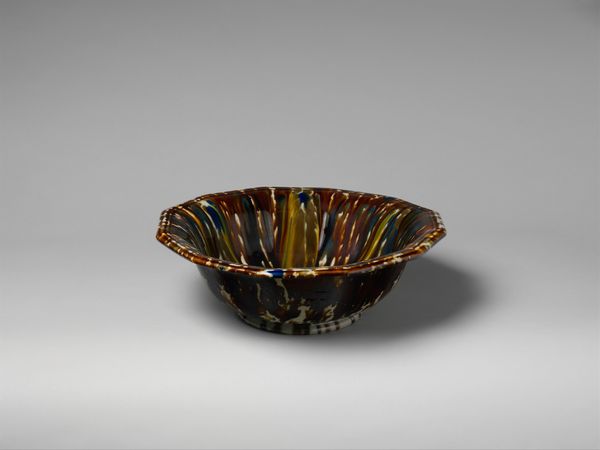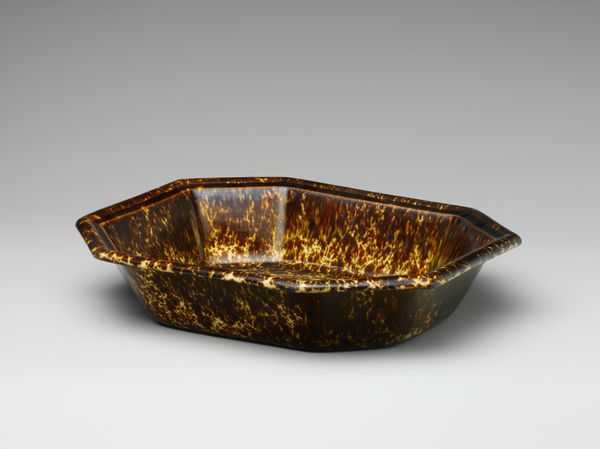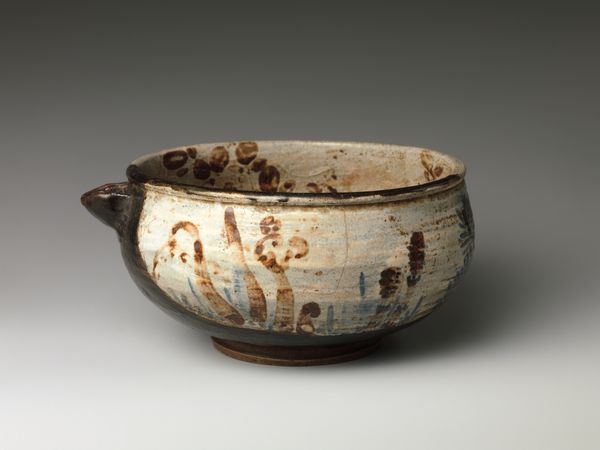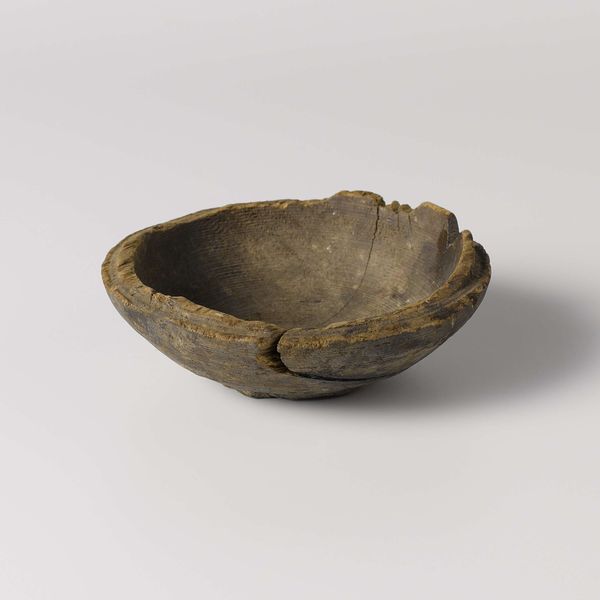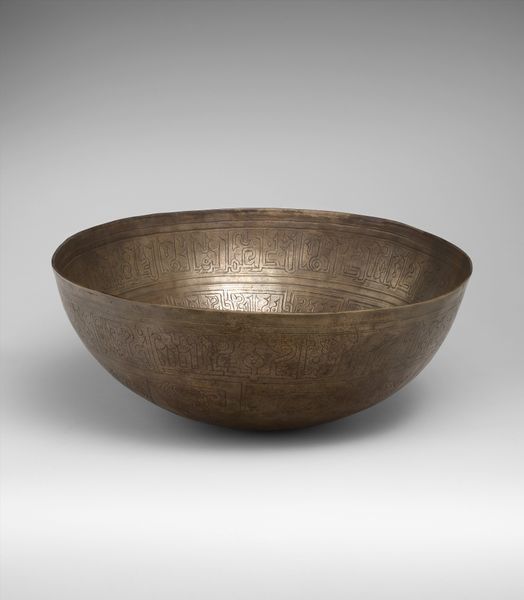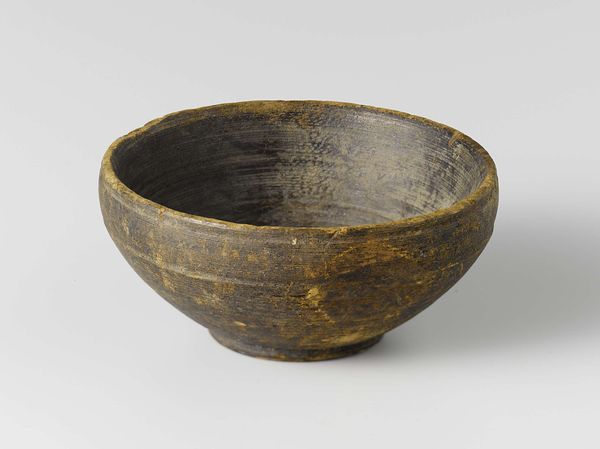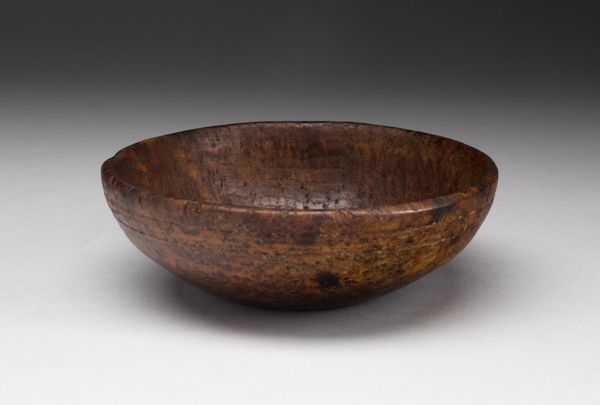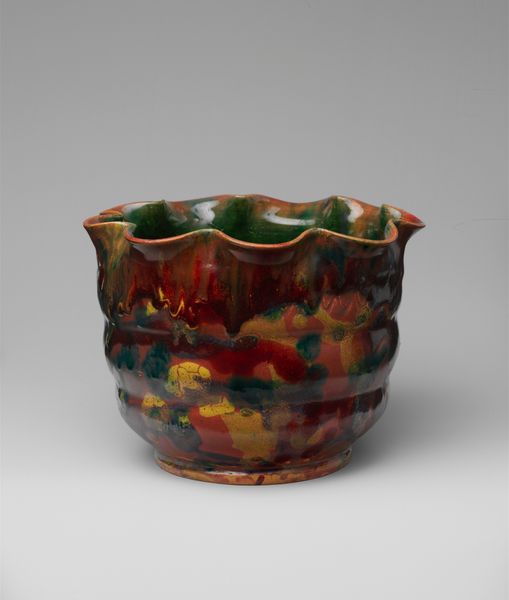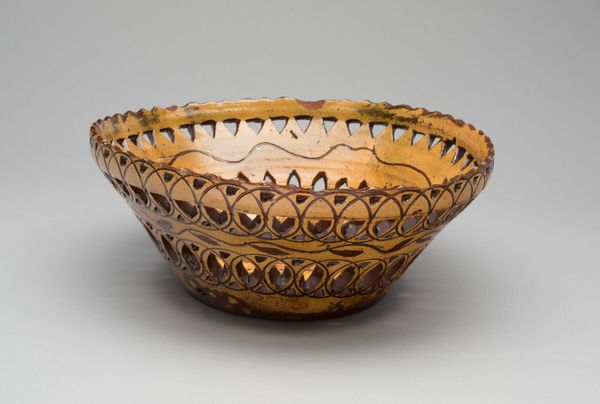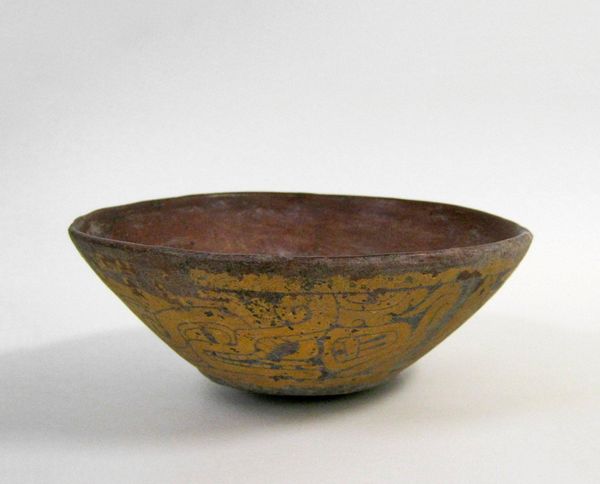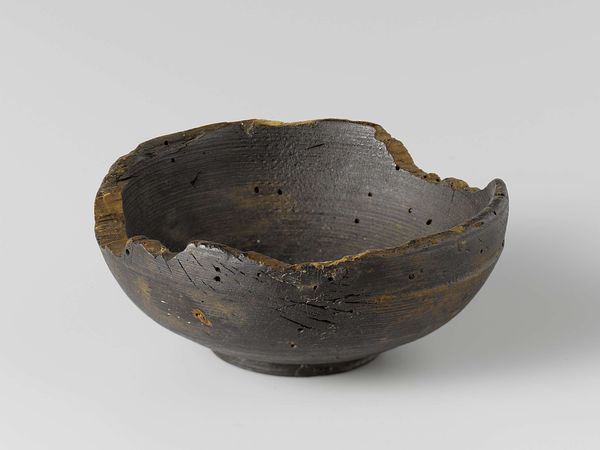
ceramic, earthenware
#
ceramic
#
earthenware
#
stoneware
#
ceramic
Dimensions: H. 4 1/4 in. (10.8 cm); Diam. 13 1/2 in. (34.3 cm)
Copyright: Public Domain
Editor: Here we have a ceramic "Basin" by United States Pottery Company, dating from around 1846 to 1858. The marbled browns and greens give it a somewhat earthy feel. How would you interpret this piece? Curator: This basin, seemingly simple, echoes much deeper historical trends. The choice of earthy tones speaks volumes, particularly during a period of rapid industrialization. Does this basin, in your view, evoke a longing for a pre-industrial, more agrarian past? Editor: It could be! It feels almost like looking into a forest floor. How did functional objects like this reflect people’s values or anxieties back then? Curator: Exactly! The marbling effect, consciously applied, mirrors nature’s unpredictable beauty, while the basin form represents domesticity and daily rituals. The brown, green, and yellow glazes suggest an appreciation of the natural world – maybe a subtle form of resistance to an increasingly mechanized society. But is it successful? Does this small object have the emotional or symbolic power to stand against major change? Editor: I can see what you mean, like it's hinting at something bigger. The color and form carry more than just function, echoing cultural memories. It also gives it more warmth than you'd expect, in the end. Curator: Indeed. And such objects also reflect the artistry and craftsmanship that was still valued, setting them apart from mass-produced alternatives. Ultimately, even utilitarian objects carry symbolic weight, mirroring cultural aspirations. Editor: I never considered that a simple bowl could tell us so much about society’s feelings. Thanks! Curator: My pleasure! The everyday, when considered closely, provides potent insight.
Comments
No comments
Be the first to comment and join the conversation on the ultimate creative platform.

